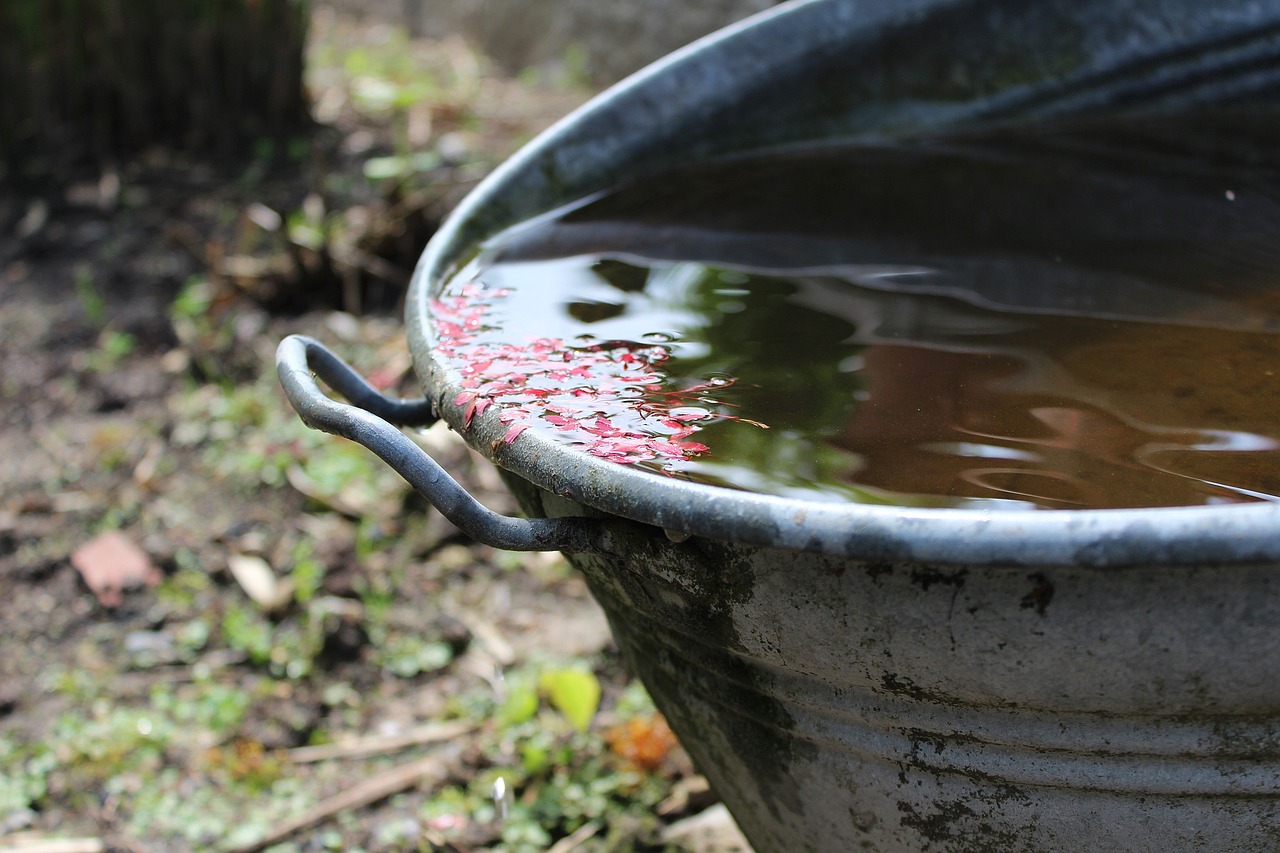
Preparing the Garden and Vegetable Plot for Winter: Work List for the Homestead. Part 2
Preparing Greenhouses for Winter Cleaning the greenhouse begins after the harvest and involves 10 steps:
- Remove the plant tops.
- Discard broken boxes, containers, and ropes used for supporting climbing plants.
- Dispose of old substrate.
- Sweep and wash the floors.
- Wash the boxes, accessories, and the greenhouse structure itself with cleaning and disinfecting solutions to reduce the risk of fungus and overwintering pests.
- Organize tools by discarding broken ones and making a note of what needs to be purchased.
- Inspect the greenhouse structure and clean the glass.
- Seal any gaps.
- Prepare new soil for planting.
- Check the heating and lighting systems if the greenhouse is heated.
Old substrate should not be kept for the next planting. Pests that have settled in the substrate develop more intensively than in open soil, as they are not hindered by natural predators or environmental factors, making them harder to manage in the next year.
For cleaning tools, a soft sponge and soapy water are suitable for removing dust and dirt and cleaning the glass. Alcohol or ammonia-based products should not be used on polycarbonate, as they damage the material. The aluminum frame should be cleaned with a dishwashing solution. Avoid using metal scrapers, as they can damage the surface.
Windows and doors need to be sealed. Greenhouse seals can last up to 30 years, but even a small gap can allow insects or cold air inside. Seal gaps with materials that mice won't chew, such as silicone sealant.
Inventory and Tools Hand garden tools should be cleaned of dirt, rust spots removed with sandpaper, and sharpened. The cutting edge of pruning shears is polished with fine-grain sandpaper until shiny.
Lawnmower blades should be removed, clamped in a vise, and sharpened with a file, sharpening only the right side of the blade. Flat-edged shovels are not sharpened. V-shaped shovels and garden hoes can be sharpened with a grinding machine.
For knives, use a sharpening stone and a small amount of mineral oil. Rakes used to collect grass and leaves do not need sharpening. Rakes used for loosening soil should be sharpened with a small file.
Wooden handles of garden tools should be inspected for chips and rough spots. Smooth out any roughness with medium-grain sandpaper. Broken handles should be replaced, as gluing them is unreliable. Metal parts of tools should be lubricated with mineral oil, and wooden parts treated with linseed oil. Large tools should be hung on hooks in the garage, while handheld tools are stored in a bucket of sand to protect them from moisture and rust during winter.
Garden sprayers should be washed inside and out with a sponge and soapy water. Clean sprayers must dry completely before storage. Chemicals used for spraying should be stored in a heated room.
Nozzles should be removed from garden hoses, water drained, and leaks sealed with tape. Hoses should be coiled and stored in a space where the temperature does not drop below 0°C.
Harvest and Seeds Seeds are still being collected from vegetables such as tomatoes and cucumbers. Choose a large, ripe fruit for seed collection. The collected pulp with seeds is placed in a glass jar of water for a couple of days. During this time, the pulp will separate, and the seeds will sink to the bottom. Extract, rinse, and dry them. If not done, the seeds may become moldy due to leftover pulp. Store seeds in a paper bag away from light, as sunlight affects photoreceptors, causing seeds to sprout prematurely. Darkness prevents this.
Flower seeds are simply dried, packed in paper bags, and stored. Avoid collecting seeds from hybrid varieties, as most will not produce the same plants or yield as the previous season.
Other Work on the Plot When the temperature drops to 18°C, start preparing outdoor pools for winter. Starting earlier could allow algae to thrive.
Preparation includes 5 steps:
- Remove all accessories, such as ladders and skimmer baskets, and rinse them with hose water before storing.
- Remove leaves and other debris from the water. Use a pool vacuum to clean the bottom, and thoroughly scrub the walls.
- Test the chemical composition to ensure it’s within normal ranges: acidity 7.2–7.6 pH, chlorine level 1–3 ppm, alkalinity 80–150 ppm, and hardness 175–225 ppm.
- Lower the water level 0.3 m below the skimmer.
- Drain water from filters, pumps, heaters, and other elements, and clean them.
Add algaecide to kill algae and a chlorine shock to kill bacteria (on separate days). Finally, cover the pool with a protective cover to prevent debris and accidental falls by people or animals.
Lawns are also prepared for winter. Pre-winter care includes aeration and rejuvenating weakened areas. Aeration reduces soil density, improving access to nutrients, water, and air for the roots. Areas with sick or dead grass should be reseeded.
Steps for preparing the lawn for winter:
- Mow the grass to 5 cm height, trimming taller grass in several passes, removing no more than 1/3 of the blade each time to avoid stressing the plant.
- Aerate the soil. A manual aerator resembles a fork with hollow tines. Pass over the area twice in different directions to avoid uneven growth (striped lawn effect).
- Spread compost on sparse grass areas. The compost should be dry, crumbly, and cool to the touch. Warm compost, which is still breaking down organic matter and emitting heat, will scorch the grass.
- Apply fertilizers. Mixtures with high phosphorus content stimulate root growth and strengthen plants for winter.
- Reseed the lawn. Fill the seeder with 2/3 of the amount of seed required for initial planting. Spread the seeds over the compost and water lightly. Water for 5 minutes twice a day until new growth appears. Then, reduce to one 15-minute watering per day. When the new grass grows to 9 cm, trim it to 5 cm.
If the lawn looks unkempt, early fall is a good time to plant a new one. Popular grasses include Kentucky bluegrass, fescue, and bentgrass. To ensure the lawn survives if it becomes diseased, plant a mixture of 2-3 grass varieties.
Beekeeping Preparations Beekeepers also prepare for winter. As temperatures drop, the queen slows egg-laying, and pollen and nectar consumption in the hive decreases, resuming after the winter solstice. Move hives to a spot that receives maximum sunlight. Insulate the hives, leaving ventilation openings. Position the insulated hive so it doesn’t freeze by touching cold ground.
Common Mistakes In addition to mandatory tasks, there are situational problems often forgotten, such as birds and wildlife, leftover water in the garden shower, or improperly stored tools.
Birds are a gardener’s best ally in fighting pests. However, attracting them in summer, when food is abundant, is difficult. To encourage their presence in winter, leave plastic feeders filled with grains and unsalted fat for titmice.
If the owner doesn’t visit the homestead during winter, it’s better to take collected seeds home and discard or store leftover grains in sealed containers, as they attract mice. Protect young tree trunks with barriers to guard them against rabbits and mice. If a garden cat lives at the homestead, provide shelter protected from moisture and cold wind.
If you plan to grow seedlings, prepare the soil in advance, using garden soil and compost. Store them in a bag along with cleaned and disinfected seedling boxes in a storage area.
Recent articles from Outdoor

Outdoor Spaces for Kids: Safe and Fun Ideas for Play
Creating an outdoor space that is both safe and fun for kids is a wonderful way to encourage them to enjoy the outdoors, stay active, and engage their imagination. Whether you have a large backy...

The Benefits of Installing a Rainwater Harvesting System for Your Yard
Introduction: As water conservation becomes increasingly important, rainwater harvesting offers a practical solution for homeowners looking to reduce their environmental impact....

Outdoor Fitness: Workouts You Can Do in Your Backyard
Working out in your backyard is a convenient and refreshing way to stay active without the need for a gym membership or fancy equipment. Whether you have a spacious garden or a small patio, you ...